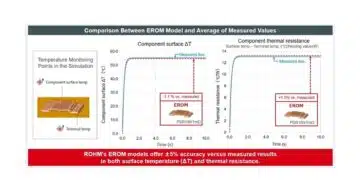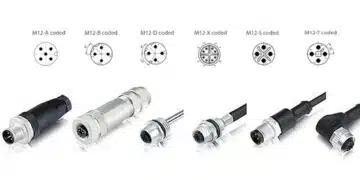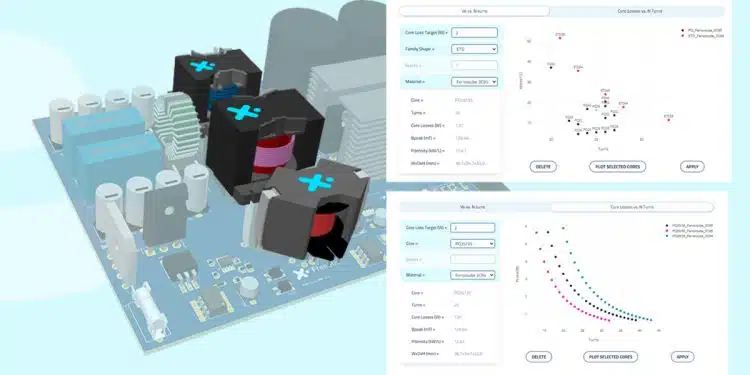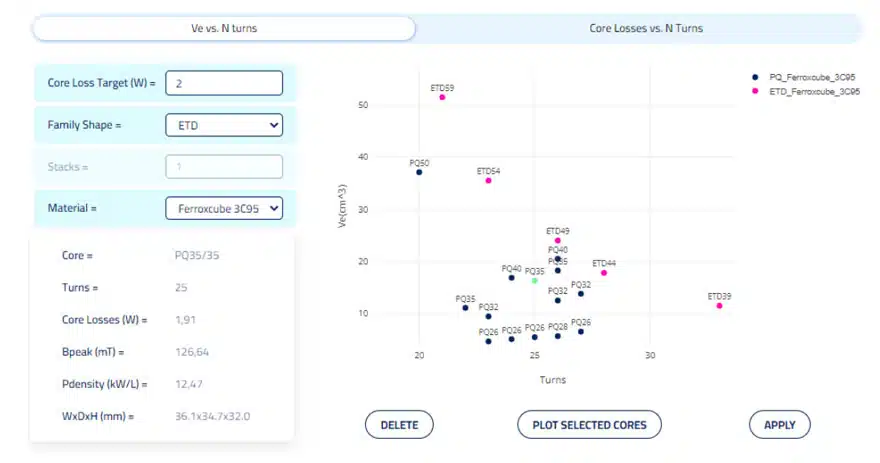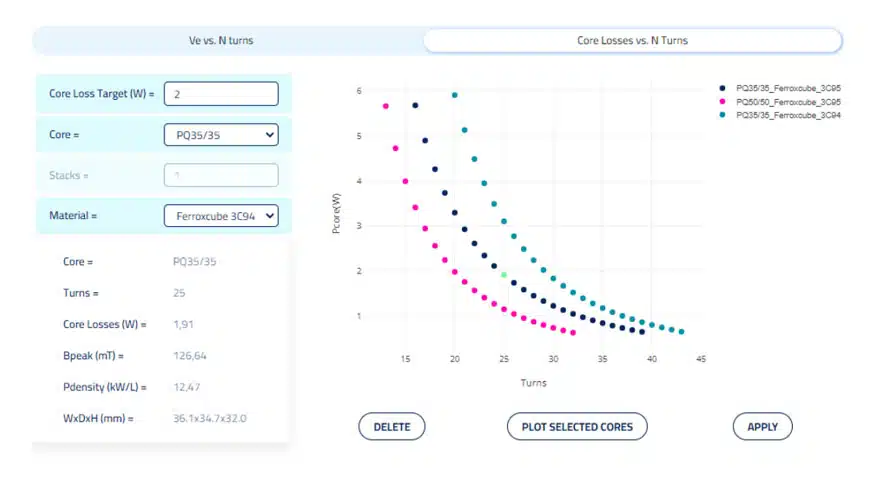Frenetic reveals its latest secret, a powerful technology that enables to choose the optimal core up to 100 times faster. Frenetic Core OptimizerTM is a new tool integrated in the online platform, capable of comparing results in a matter of seconds.
Frenetic, the Spanish tech company born to change the Power Electronics industry, launches the latest version of their online platform. Its novelty is the Frenetic Core OptimizerTM, ready to solve some of the problems that engineers face every day.
Every Power Electronics engineer knows how long it takes to make decisions in the magnetics designs process, especially with the core selection, that determines the size and price of the final product. Those more experienced already have their own algorithms implemented in a calculation program or an Excel sheet. However, it is difficult to include new variables, such as new materials, and sometimes they must restart all the process when moving to a different project. Those with less experience in the field must do all the necessary lab experiments to create their own method, together with a design system.
Currently, the best engineers around the world are using Frenetic Online for choosing the most suitable option for their components in the shortest period. In the last few years, through the Frenetic online platform, hundreds of companies have designed and manufactured samples of their most complex components, decreasing the size up to 3 times compared to their previous solution, and securing the supply chain, even under the current circumstances. This experience has built a consolidated team of engineers with the necessary knowledge to implement solutions based on the scientific method.
In the words of Dr. Chema Molina, CEO of the company: “At Frenetic, we have always worked to empower our users and make their work more effective. After years of experience with some of the best manufacturers worldwide, covering very specific needs, we have been able to learn from our successes and experiences. Today, we can finally provide our customers with this knowledge to use in the decision-making process and turn the design and manufacturing procedure even more efficient.”
Frenetic has therefore released the Core OptimizerTM, result of the application of the scientific method in the design of high frequency magnetics. This new tool comes from the necessity of having a feature based on Frenetic’s laboratory experienced that enables the users to have much more accurate results and with less iterations.
The Core OptimizerTM, already available on Frenetic online, provides the most accurate results within just a few seconds, supporting the engineers when selecting the optimal core for the magnetics component. During the design process, after the introduction of the specific waveform and losses target, the engineer only has to select the Core OptimizerTM tab and start comparing all cores in a family by the turns needed, and core by core, until the optimal core is found.








